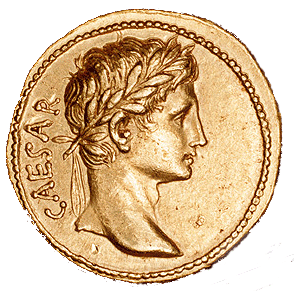[Greek] χαρακτήρ (charaktēr), [Latin] character: exact representation, engraving, impression, impress, mark, brand, reproduction, stamp, image; Heb.1:2-3

Background Information:
Greco-Roman culture:
Representations/copies: Images were impressed upon coins, wood, stone, brass, and other surfaces. Having the emperor’s image on coins was a widely held practice of bestowing honor to the emperor. This also served to raise currency for infrastructure projects and to provide commemorative coins for the populace. An impress of something is a sign of what it is significant or important. Hence the copy of a book still attains significant value.
Moral typology: This term becomes identified with the qualities, traits, and persona of an individual. Greek playwrights Euripides and Menander developed characters, defined by a specific trait, such as arrogance. In addition, stock characters, historically having dull and flat qualities, have been often subject to ridicule and parody. Sometimes, an ambiguous characters appear, being unable to be clearly understood.
Greek truism: ‘Why is there no mark engrave on men’s bodies by which we could know the true one from the false one.’ Euripides (431 B.C). Appearances can be deceiving. This mark serves to define that person.
Distinctiveness: An important official placing hiss seal or stamp can illustrate his authority and influence. A medical doctor leaving his “mark” on a prescription illustrates this medical authority. This distinctiveness applies to language, rhetoric, and philosophy. Their style defines the kind of poet, orator, or philosopher that person could be. As a result, several philosophical schools of thought had developed over time.
Judaism: Interestingly, this term occurs only two times in the Old Testament and once in 4 Macc. Lev.13:28 refers to the scars that result from burning of the skin. 2 Macc.4:10-11 refers to being initiated (marked) into the Greek way of life. 4 Macc.15:4 refers to the likeness between parents and children. Man was created after the image of God.
New Testament: God’s glory has impressed itself on Jesus as the One exalted by God. Jesus is the reflection and image of God. Jesus impresses His glory on the cosmos, especially in relation to man. His humiliation and exultation become the cause of eternal salvation. This image of God brings about His saving work.
Scripture:
“In these last days, He spoke to us through a Son, whom He made heir of all things and through whom He created the universe, who is the refulgence of His glory, the very imprint of His being, and who sustains all things by His mighty Word. When He had accomplished purification from sins, He took His seat at the right hand of the Majesty on high.” Heb.1:2-3
God’s revelation of His saving purpose is achieved through His Son, whose role is redeemer and mediator of creation. He is made heir of all things through His death and exultation to glory. Yet He existed before He appeared as man. Through Him, God created the universe.

This line comes from Menander’s play Thais
Conclusion:
Character, characterize, characterization
It was interesting to discover that this term originally meant a representation or copy of something. Over time character embodied the moral nature of a person (persona) on the stage and in real life. Most of us had already known this, but it is fascinating to see how this idea developed. So making (leaving) one’s mark means making your presence and character known to others.
It is remarkable that the ancient Greek dramatist Menander (343 -291 B.C) had an influence on Paul. Paul cites from Menander’s play of the line, “Bad company corrupts good character.” This is referenced in 1 Corinthians.
“Do not be led astray: ‘Bad company corrupts good morals.’” 1 Cor. 15:33
